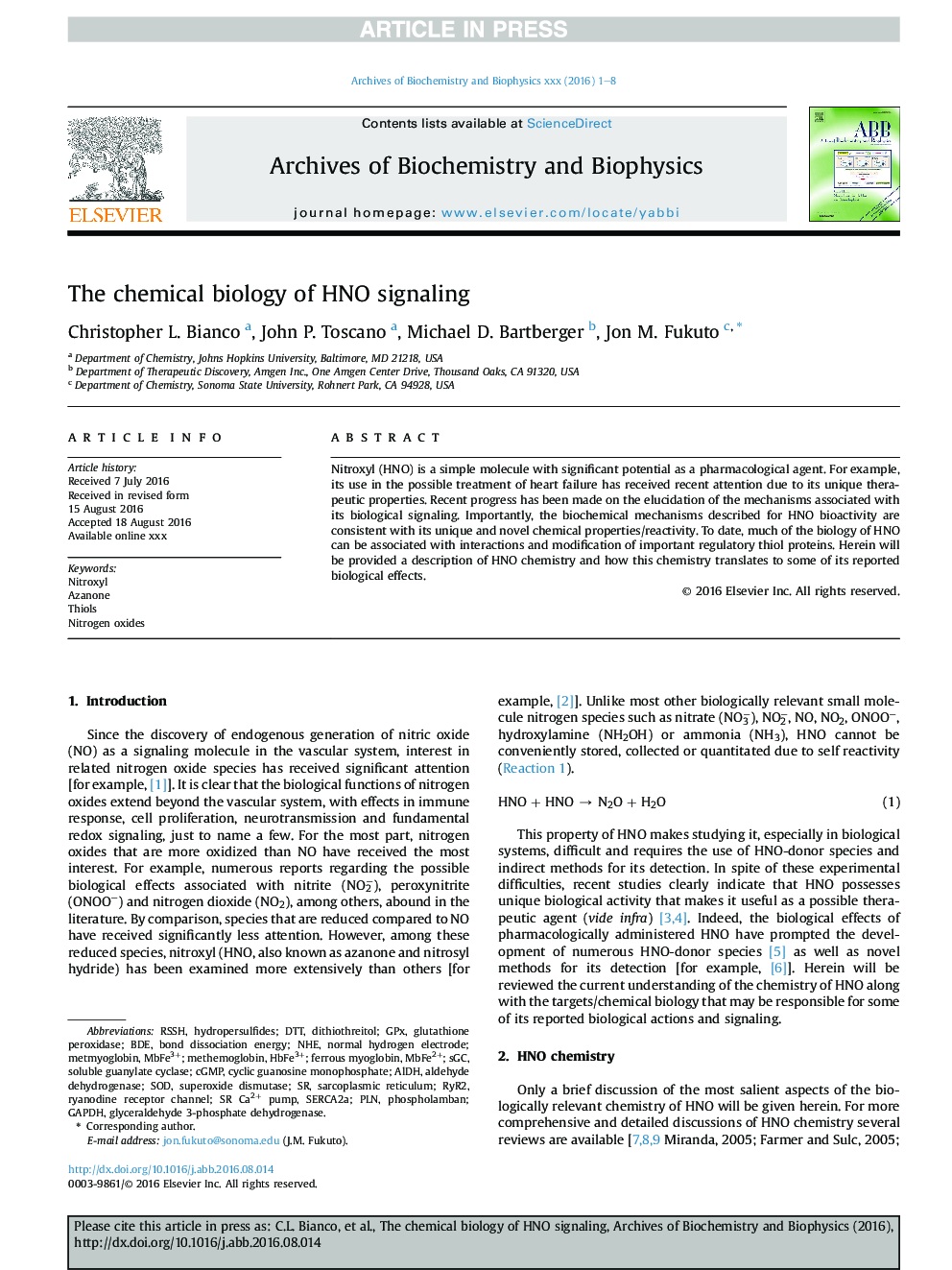| Article ID | Journal | Published Year | Pages | File Type |
|---|---|---|---|---|
| 5504447 | Archives of Biochemistry and Biophysics | 2017 | 8 Pages |
Abstract
Nitroxyl (HNO) is a simple molecule with significant potential as a pharmacological agent. For example, its use in the possible treatment of heart failure has received recent attention due to its unique therapeutic properties. Recent progress has been made on the elucidation of the mechanisms associated with its biological signaling. Importantly, the biochemical mechanisms described for HNO bioactivity are consistent with its unique and novel chemical properties/reactivity. To date, much of the biology of HNO can be associated with interactions and modification of important regulatory thiol proteins. Herein will be provided a description of HNO chemistry and how this chemistry translates to some of its reported biological effects.
Keywords
ALDHRSSHBDEHydropersulfidesAzanoneRyR2SERCA2aDTTNHEGPXPLNGAPDHcGMPSGCaldehyde dehydrogenasenormal hydrogen electrodebond dissociation energyNitrogen oxidesThiolsdithiothreitolSarcoplasmic reticulumSODSuperoxide dismutaseSoluble guanylate cyclasephospholambanMetmyoglobinmethemoglobincyclic guanosine monophosphatenitroxylglutathione peroxidaseglyceraldehyde 3-phosphate dehydrogenase
Related Topics
Life Sciences
Biochemistry, Genetics and Molecular Biology
Biochemistry
Authors
Christopher L. Bianco, John P. Toscano, Michael D. Bartberger, Jon M. Fukuto,
